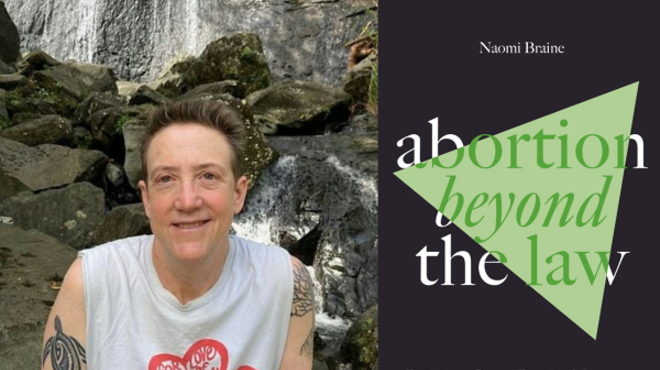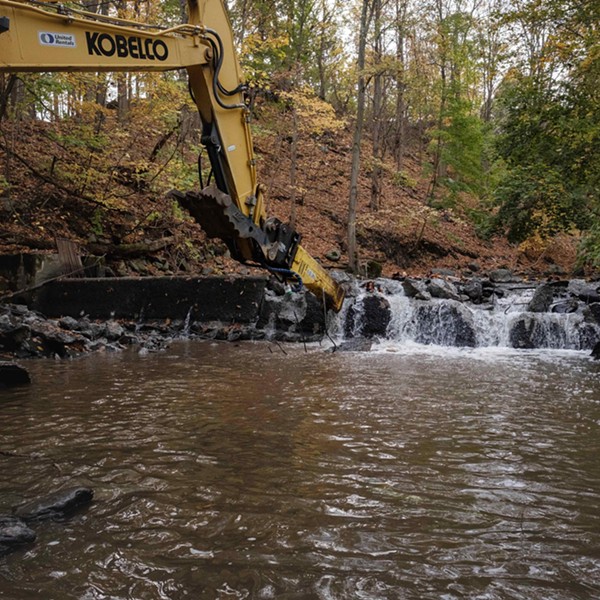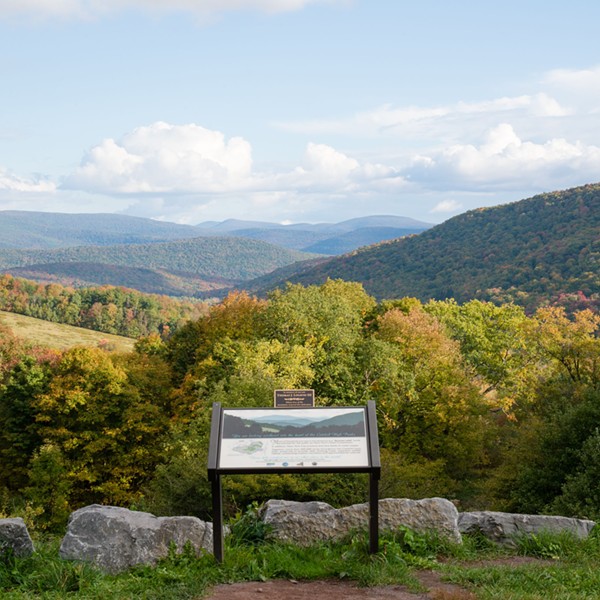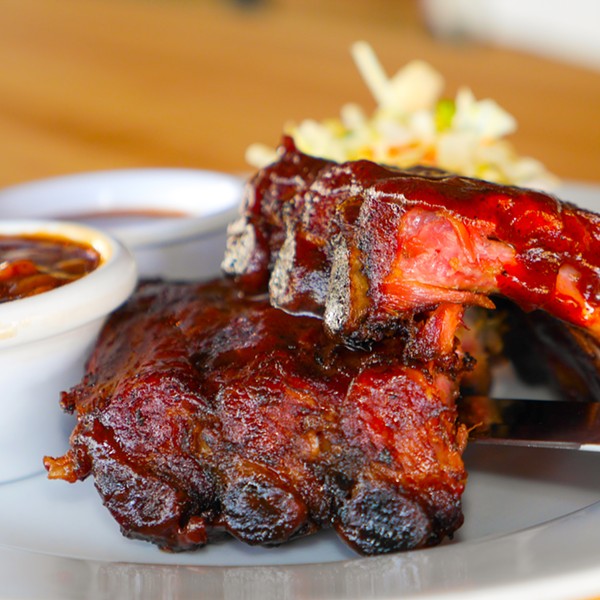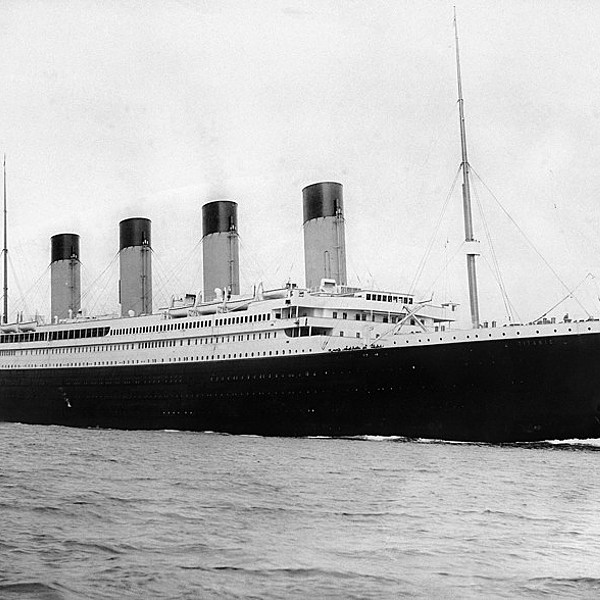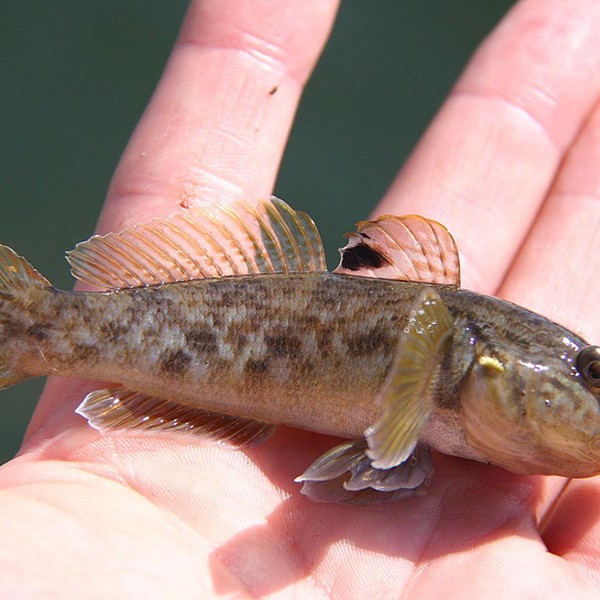Paddling the Hudson: Choosing Your Route
The Hudson River runs 315 miles from its headwaters at Lake Tear of the Clouds in the Adirondacks to its mouth at New York Harbor, where it empties into the Atlantic. You can paddle on the Hudson River itself or on one of the many creeks, rivers, and estuaries that flow to the Hudson. The river itself offers the longest paddles, including multi-day trips, with overnight camping along the way. A surprisingly large number of state parks along the way allow tent camping. Hudson River Islands State Park, for example, is actually accessible only by boat. Hudson River Greenway Waterway also maintains a listing of itineraries, as well as locations for kayak racks, where you may use your own lock to secure your vessel.
If you'd like to get out on the river and test your sea legs before embarking on an overnight voyage, Mountain Tops Outfitters rents kayaks from Long Dock Park in Beacon (or you can launch your own vessel here). If you rent from Mountain Tops, they ask that you stick to the area between the Newburgh-Beacon Bridge (to the north) and Fishkill Creek (to the south).
If you're looking to travel from one point on the river to another place downstream, but you want to start with something short, you can paddle from Beacon to Cold Spring, passing directly through Wind Gate, where the river passes between the great dome of Storm King Mountain to the west and the popular rock scramble of Breakneck Ridge to the east. This paddle will take you on a primeval path that glaciers once carved through the rock, forming these two present-day peaks. It's also convenient, since each town has its own train station and nearby launch site. Paddlers can park a car in Beacon, paddle south down the river for six or seven miles, disembark in Cold Spring, and then take the short train ride back to their car. In the 1960s, Storm King Mountain was threatened by Con Ed's proposed pumped hydroelectric power storage station, but the environmentalists won the day, and this glorious stretch of river is yours to paddle.
If you don’t want to go it alone, Mid-Hudson Adirondack Mountain Club. All summer through mid-October, the outdoor adventure club meets up for group paddles, such as the weekly evening paddle on the Hudson River at spots between Beacon and Norrie Point.
Planning & Safety on the Hudson River
If you're new to navigating the Hudson, Kris Seiz, owner of Storm King Adventure Tours, recommends hugging the shore, cautioning that only more experienced paddlers should try paddling across the river—and the shipping channel that runs down its approximate center. A kayak or canoe is no match for the huge barges that move within the shipping channel—barges that can be hundreds of feet long, and one hundred feet wide. Steer clear, they have right of way!
Another part of planning your trip is estimating the time it will take you to paddle your itinerary. Acting Executive Director of the Hudson River Greenway Scott Keller cautions, "It is difficult to estimate paddling time, not just because people’s skill levels vary, but because conditions vary. Even very strong paddlers will make wildly different times if they are paddling against or with wind and tide.” (And don’t forget the current moves a rate of 1-2 mph) . “In calm waters (no wind or current, such as on a lake) most new paddlers can expect to make 2-3 miles per hour," Keller says. If you don't know your speed yet, it's wise to give yourself extra time. Hudson River Expeditions owner Brian Grahn adds that for comparably skilled paddlers, "a kayak will perform better, be more stable, and move faster than a canoe."
When paddling on the Hudson, it's important to take all the usual precautions, including:
- wearing a personal flotation device (PFD)
- informing someone on land about your itinerary
- kayaking with a buddy
- knowing your equipment and your skill-level
- checking the weather (including wind speed, current, and tide).
"The Hudson River on a windy day can be quite treacherous, and on a calm day as kind as the [Esopus] creek," explains Gail Porter, owner and guide of I Paddle New York. In addition, it's important to know about the tides and the currents they generate, which vary at different distances from New York Harbor. At times, the tidal current actually flows north, in the direction of the headwaters. Check the tide for the specific location you're planning to paddle. Some trips (such as the Constitution Marsh paddle described below) are only possible during certain parts of the tide cycle.
Hudson River Side Paddle: Constitution Marsh
Hudson River Expeditions owner Brian Grahn says that those who are dipping their paddles into the Hudson for the first time—so to speak—often get the greatest satisfaction from one of the side paddles, rather than the more challenging feat of paddling on the Hudson itself. One popular side paddle is at Constitution Marsh, a 270-acre bird sanctuary within the Hudson Highlands State Park managed by Audubon New York. The Marsh gets its name from the adjacent Constitution Island, which was the site of a Revolutionary War fortress. During the war, a great chain was placed across the Hudson here to prevent British ships from penetrating further north, Vikings-style.
Channels that branch out through the marsh itself were once dug for an unsuccessful attempt at farming wild rice in the 1830s. Nowadays, they make excellent waterways for paddlers eager to make their way among cattails and purple-flowering peckelreed for the chance to spot some of the 300 bird species that frequent the marsh. The American Black Duck, Wood Ducks, and Mallards can all often be found wintering here. And birds such as the Peregrine Falcon stop here during their migration. You might also see the common introduced bird species here, the Mute Swan.
The Audubon Center offers educational programs and guided canoe tours of the marsh, rather than go-at-it-yourself rentals. If you already have some paddling experience, you can also access this area from Foundry Dock Park, near the Cold Spring Train Station. Hudson River Expeditions operates a kayak rental at Foundry Dock Park, or you may launch your own vessel here. From Cold Spring, paddle south and then cross east underneath a railroad trestle to enter Foundry Cove and Constitution Marsh itself, beyond it. Getting from the Hudson River into the Marsh requires some finesse. At low tide, you risk being unable to pass over the mud flats, and at high tide you will be unable to pass safely beneath the trestle. Please never cross above the railroad tracks. You can estimate the tides at Constitution Marsh by consulting the tides for Peekskill (to the south) and Beacon (to the north). You may call the Audobon Center for more information about when you can safely paddle from Cold Spring into the Marsh: (845) 265-2601.
East of the Hudson Paddle: Lake Taghkanic
East of the Hudson, Lake Taghkanic is an inviting place for paddlers, easily accessible by car from the Taconic Parkway. This is an entry-level paddle, without the more delicate preparation required for Constitution Marsh or a paddle on the Hudson River. You can make your way around the lake in a kayak in about one hour.
This is also a good place to come with kids, or with a partner or friend who might be new to paddling. There are kayak rentals, a sandy beach for swimming, lifeguards during swimming hours, a concession that sells food, and a bath house with showers. If you'd like to stay overnight, there are also campsites and cabins for rent. The woods here are thick with oak trees that will soon form bright yellows and reds in the autumn sun as you make your way around this lake.
West of the Hudson Paddle: The Lower Esopus
West of the Hudson, Harriman State Park has many lakes where kayaking is permitted, such as Lake Welch, Lake Sebago, Lake Tiorati, and Lake Kenawaki. Unlike Lake Taghkanic, there are no rentals within Harriman, however, so you must bring your own kayak or canoe. A $15 season pass is required for access to Lake Tiorati and Lake Welch. Lake Kenawaki is partly closed in the summer for a camp that operates on a portion of the Lake.
Also west of the Hudson, Gail Porter, owner of I Paddle New York, offers kayak rentals on the gentle waters of the Lower Esopus. The Upper Esopus is a white-water paddle, which empties into the Ashokan Reservoir. The Lower Esopus, below the Ashokan Reservoir, empties into the Hudson. Porter also guides kayak groups from the Saugerties Steamboat Company below the Cantine Falls out to the Saugerties Lighthouse and the Hudson.
Porter describes the wildlife you can encounter on the Lower Esopus, and the Esopus Bend Nature Preserve through which it passes: "There are herons, turtles, ducks, and an eagle that’s been hanging out this summer!" she says. There are also sandbars where you can stop and swim.
Guiding creek expeditions in the Catskills is not just a job for Porter. "Paddling became my passion at a time when my life was going a bit sideways,” she says. “I found that after paddling about on the water in the sunshine, I would feel relaxed and a sense of peace.”
While you're visiting Saugerties, you can walk to the Saugerties Lighthouse. Built in 1869, the Lighthouse has an unusual design, with the light itself perched atop a brick structure that is much more a house than a tower. A not-for-profit now manages the Lighthouse and offers guided tours on Sundays from Memorial Day through Labor Day. The Lighthouse also serves as a popular bed-and-breakfast year-round—so popular that they're now taking reservations for 2019. If you're ambitious and you plan carefully, the B&B can serve as an cushy overnight stay on a longer route along the Hudson itself. Or you can plan a visit after enjoying one of Ms. Porter's paddles.









